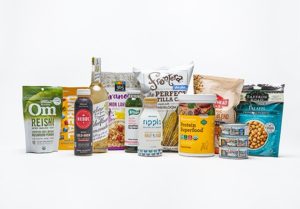As the market evolves, so does the concept of a snack, generation by generation. Snack producers should keep on top of these trends when catering to a specific generational demographic and determining how best to communicate with them. Here’s a good example of a millennial food marketing trend you should know!
First off, let’s establish that millennials love snacks. They love snacking, shopping for snacks and thinking about when their next snack will be. (I’m doing it right now…)
In fact, millennial love of snacking has grown so much that it is beginning to replace the concept of the standard meal altogether.
A study by Amplify found that 92 percent of millennial respondents choose a snack instead of a meal at least once per week. Half of the respondents reported choosing a snack over a meal at least four times per week and 26 percent said they ate a snack instead of a meal an average of once per day.
Why the drastic increase in snacking over eating a “real” meal? Another study found that 39 percent of millennials said they were “too busy” to eat anything but a snack and 17 percent reported they snacked when they “couldn’t be bothered” to cook or prepare a full meal. Hashtag relatable!
Results from a Cornell food psychology study showed that people in general viewed a “meal” as an occasion where the person was eating with others, sitting down and staying for at least 30 minutes. In contrast, “snacks” were seen as eaten alone in shorter periods of time.
The food was also considered a “meal” if more preparation went into it. If the plates were ceramic and the meal was not prepackaged or easy to eat out of the box, people were likely to report they saw a meal.
Additionally, mood determines the difference between a meal and a snack. Meals are associated with happiness while snacks are associated with boredom and impulsiveness.
Oftentimes, Millennials do not even see “meals” and “snacks” as different concepts. That’s because these extensive, sit-down meals are not as popular among busy young professionals. They simply eat when they want, when they can and where they are. As a result, the portable snack industry offering convenient, easy to eat, and hassle-free options, is exploding with this demographic.
As these values are top-of-mind in millennial snackers, the demographic is generally ambivalent as to where they purchase their snacks. Whether it’s at a big-box grocery store or the Starbucks down the street from their office, all that matters is they get something to eat (Martino, 2017).
While the traditional snack can be considered a candy bar or a bag of chips from the gas station down the street, millennials are prone to thinking one step beyond. If you only have time to eat while rushing in between meetings, why not make it a calorie-dense protein bar for “lunch?” If you’re working through lunch or exercising midday, a yogurt parfait you can eat at your desk makes more sense than a full roast chicken for your midday meal.
When talking directly to your audience, it’s important to know their values and behaviors. For example, some protein bar manufacturers have repositioned themselves in the market from casual snacks to full meal replacement bars to target the consumer on the go.
If you’re unsure whether your snack product is “just a snack” or can be used as a meal, the best way to find out is to ask your audience! Find out what your customers use your product for and what time of the day they prefer to consume it. Who knows – your snack might just be a millennial meal!
Sources:
Learn more about millennial snack habits and dive deeper into the data in our latest eBook, “Millennial Marketing: Snacking!”



